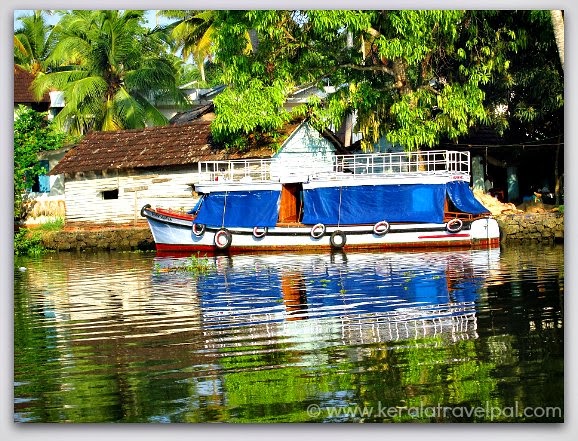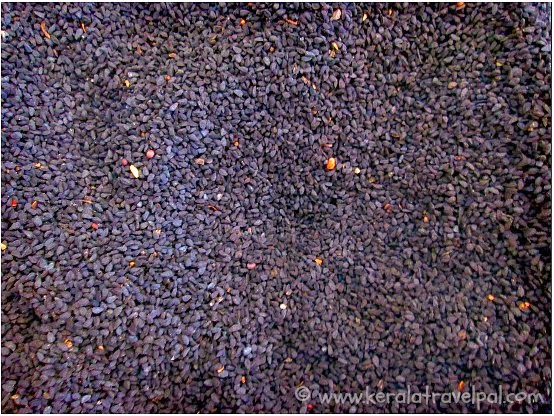Kerala is one of the places on the planet where spices grow the best. Even thousands of years ago, traders from different parts of the world regularly arrived here in ships to buy pepper and other spices.
Turmeric is one of the widely used spices in India. The dry tubers are powdered to make the spice that you see in the kitchen cabinet. The health benefits of circumin contained in turmeric is no longer a secret. From preventing cancer to healing wounds, the advantages are many.
I don't have to tell you about we Indian's love of chillies. The variety of chillies that are grown in India is quite impressive.
Kerala cooking uses chillies in different forms. Fresh chillies are used as such. For some dishes fresh chillies are ground with other spices to make a paste. Chilly powder is also a common ingredient in cooking. Red chillies as in the picture, goes well in some dishes such as Upma.
You will see a chilly plant or two in any backyard.
Kerala pepper has been known to the world for thousands of years. Do you know that the mummy of egyptian Pharaoh Ramesses II has pepper stuffed in the nostrils? He lived about 3300 years ago. Malabar coast (Kerala) was the only source of pepper during that time.
Pepper is the most traded spice, thanks to its universal acceptance as a spice and seasoning.
Because of the strong aroma, cloves are used in meat dishes. It is also used in bakery products. Clove oil has a variety of uses. An ingredient in mouth wash products, it is also used to relieve tooth ache.
Cardamom grows well in the wet cool conditions of the eastern hilly region of Kerala. You will find some of the best quality cardamoms in this part of the world.
Cinnamon was one of the highly sought after spices of the ancient world. Do you know that cinnamon was more valuable than gold?
Cinnamon has an inferior alternative - cassia. Beware, cassia causes health issues. Cassia closely resembles cinnamon, which makes distinguishing between the two difficult.
Coriander is a widely used spice. In kerala, coriander powder is added to most curries.
In Kerala, Ginger is used in meat dishes.
Injikkari or
Injippuli is a dish made of ginger. Pickles and candies are also made out of them.
Dry ginger, called
Chukku, is usually kept at homes as a medicine.
Chukku and Kurumulaku, a concoction of dried ginger and pepper powder is used to relieve cold and flu symptoms.
Sesame is grown as an alternative crop in paddy fields. Sesame grows well in the dry season when growing rice is not possible.
The seeds are used to make sesame snacks such as
Ellunda (sesame balls), a popular snack.
Mustard seeds is an active ingredient in Kerala cooking. Usually they are added to hot oil to burst and release the flavor and added to curries.
Star anise is NOT cultivated in Kerala. However, it is used in meat dishes as an optional spice.
In India, the only place it grows is Arunachal Pradesh.
In India, Nutmeg is used in Mughal style cooking. It also has medicinal properties. Nutmeg powder is and ingredient in Gharam Masala.
Nutmeg and mace are two spices obtained from the same tree. Nutmeg is the seed, mace is the covering of the seed.
Mace is similar in flavor to Nutmeg and is used in a variety of dishes including meat preparations and desserts.
Read about Kerala cooking
Find us on Facebook























































